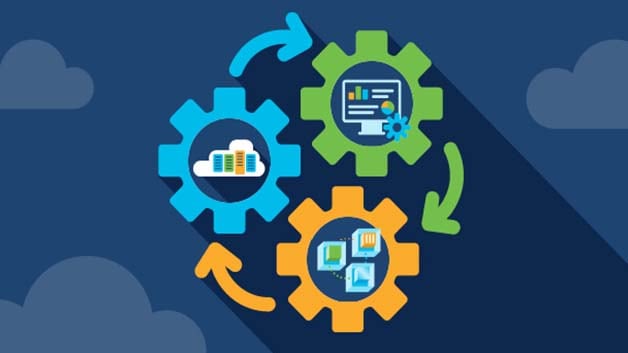Q&A
How do cloud automation and orchestration differ?
Cloud automation involves programmatically performing an operation on an individual component of an application, workload, resource, or infrastructure within a cloud platform. Such operations can be querying a database, configuring a switch port setting, or powering on a server.
Cloud automation comprises the building blocks for delivering cloud orchestration, which is the process of coordinating multiple, interconnected and often interdependent automated tasks across multiple components to achieve a specific goal, like creating, updating, or removing an app deployment.
Cloud orchestration helps IT organizations reduce manual, repetitive work, better standardize their deployments and operations, and accelerate delivery. Most IT organizations employ multiple cloud orchestration methods, sometimes in combination, to best suit varying operational requirements.
For example, some follow an imperative method of executing the automation building blocks in a procedural way using workflows. Another approach follows a declarative method of specifying the desired outcome and relying on internal algorithms to derive the operations and procedures required to deliver that outcome.
What are the options for cloud orchestration?
Businesses have many options to consider for cloud orchestration and the most effective choice depends on the specific needs of the IT organization and their operational methods.
For example, a business that relies on in-house application development may focus on declarative forms of cloud orchestration designed to serve DevOps practices and continuous integration/continuous delivery (CI/CD) pipeline integration.
However, a business managing the continuous operations and lifecycle of commercial applications may need a more imperative approach to cloud orchestration to manage dynamic operational demands.
Many organizations use multiple forms of cloud orchestration to best suit varying requirements. Some businesses use a declarative approach to orchestrate the deployment of baseline application and/or infrastructure blueprints, and then shift to imperative forms of orchestration for more adaptive operations and lifecycle management.
Some cloud orchestration offerings work with specific cloud services and platforms to provide more prebuilt, out-of-the-box capability, while others provide a broader, more extensible framework to enable deeper customization and a larger scope to address multicloud and hybrid cloud requirements.
Also, some providers offer cloud orchestration tools to achieve certain goals, like operational cost arbitrage, optimization, or policy compliance.
